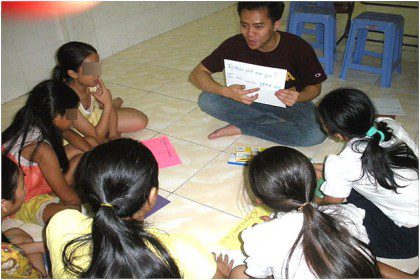
Frater James Nguyen is member of the Dehon Formation Community, studying at Catholic Theological Union in Chicago. The following is his reflection on volunteering this summer with One Body Village, an organization that focuses on rescuing children from sex trafficking, and educating and emplowering communities to prevent such exploitation.
“Had I glimpsed just a little of the suffering I would witness and the heartbreak I would endure, I would have fled in the other direction… But I could not foresee any of these things… And many years later, with tears in my eyes, I remembered my decision to follow this God no matter what the cost.”
– Daniel Walker, “God in a Brothel”
The reality is that human trafficking is the second largest criminal industry ($32 billion), falling just behind drug trafficking. About 30 million people are enslaved around the world. Of that number, 2 million are children who are bought, sold and kidnapped for sex every day.
For four weeks this summer, I had a chance to encounter that reality in Cambodia. It literally tore my heart apart because those statistics are not merely numbers, they have faces. I have worked with middle-school-age kids for many years so this made it particularly painful. Nothing that I have done could prepare me for such an emotionally and spiritually draining experience. But the heaviness that it carries also brings an abundance of joy and hope because these girls are so beautiful, precious and deserve so much better, especially for what they have gone through.
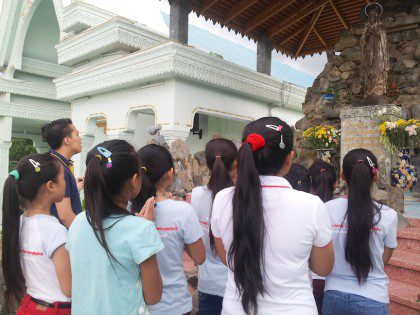
To get from Chicago to Phnom Penh took about 21 hours, not including layovers. Battered and jetlagged like never before, I arrived in Cambodia and was picked up by the director of the One Body Village (OBV) house. OBV is a non-profit organization that addresses the issue of child-sex trafficking in Cambodia and neighboring countries. I spent much of my time in the OBV house that rehabilitates girls who have been trafficked and also cares for those who are at-risk of being sold. There were 11 girls in the house; ages ranged from 8 to 16 years old.
The day I arrived the girls were waiting by the door and greeted me with big smiles. I wasn’t sure if they were excited to see me or if they were just happy that that they could finally eat lunch after a 45-minute wait. Their typical day when I was there consisted of going to school at 7 a.m., receiving tutoring of Khmer and English in the afternoon, and then a session with me in the evening hours. I helped them with conversational English as well as a bit of grammar, math, science, catechism, first aid, and everything in between. There are two stories that I enjoy sharing. One is that the girls make these colorful friendship bracelets to sell to their peers for 700 Riels (17 cents) to cover the cost of their own tuition for one day of school. Another is their obsession with snow. They told me how much they love snow and dream of one day being able to see it for themselves. Just coming from one of the worst winters in Chicago, I nodded in acknowledgment and then prayed to myself that “they be forgiven for they do not know what they are saying!”
One of my most memorable moments was when a new girl came to the house; she was a lovely young girl, one of nine siblings. Her dad collects recycling goods to sell for a living and her mom stays at home to take care of the children. Because of that, she’s a prime target for sex traffickers. She was adapting fine for most of the day, but once night struck, she began crying without end because she felt abandoned by her parents and wanted to go home. Although I’m told that crying is common for those who first come, since it was my first time experiencing it, I didn’t know what to do. I just sat next to her and held her. Nothing I said or did could stop the uncontrollable crying so in frustration and being heart-torn from seeing her cry, I cried with her. We sat for a good half an hour. It truly breaks my heart to see these girls and what they have to go through at such a young age.
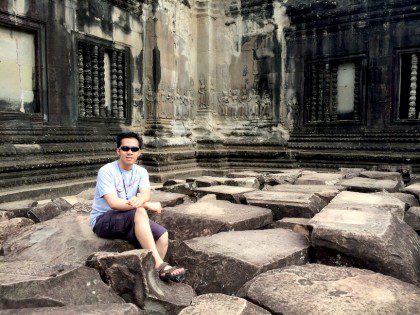
Most of the girls come from poor and broken families. It is common to hear stories of a father or mother leaving to find a new spouse. On top of that, the cycle of poverty is vicious. Desperation for money has led mothers to willfully sell their own daughters to be raped. Sometimes it is to supply the parents’ own addictions to gambling, drugs and alcohol. Pedophiles spend as much as $400 an hour to be with a child. With a certificate of virginity, which hospitals provide, the price of a girl can sometimes be in the thousands depending on her physical attractiveness. Most girls who are trafficked are between the ages of 8-12 years old and usually see five to ten men a day. Girls who do not meet the quota for the day or try to escape are tortured, abused, starved and even drugged. If they are lucky enough to be rescued, they are met with the stigma of the culture where reintegration into society can be a challenge. The culture tells them that they are trash and shuns them from the village. For that reason, you see a significant number of girls return to their former trade for they feel it is no use trying to go to school or changing the way they are.
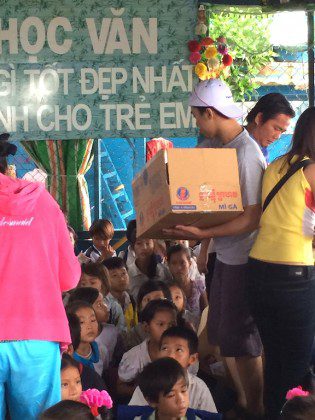
I’ve heard of some girls who try to commit suicide by cutting their wrists. Coming to places like the OBV house and having a network of people to support them gives these girls a chance to heal spiritually and emotionally from their trauma. For the first time in their lives they have the opportunity to go to school and not worry if there will be food on the table the next day. Here, the goal is for the girls to learn life skills and have vocation training in order for them to find work. Most importantly, they have to come to believe that they are loved and worth loving.
One of the places that I was fortunate to be invited to visit was Agape International Missions (AIM). They are located in Svay Pak, a village also known as “Kilometer 11,” the epicenter of child-sex trafficking. This is a place where humanity is at its very worst and very best.
A decade ago, the percentage of girls in this village that were trafficked was at a staggering 100%. This means that every little girl who was born into this village was sold into the sex industry. Thanks to AIM, which rescues and tries to rehabilitate these girls, that percentage has significantly decreased. When I was there, I was taken to see the wonderful ministries that they do from counseling to healthcare to job training. I was told of a tragic story of a girl who was raped, sold, and thankfully rescued a week before I came. What made it heart-wrenching was that the little girl was only four-years old.
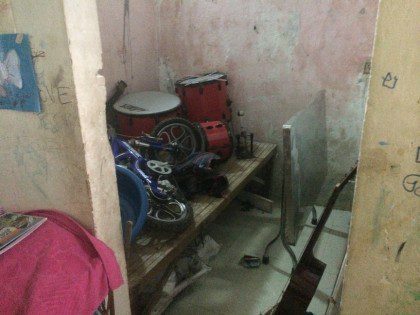
They showed me a house that was a former brothel, now turned into a prevention center for at-risk girls. Inside were rows of tiny rooms with a wooden bed where girls would be locked into with men. It was not easy seeing what I saw. If you are further interested, I recommend the CNN Freedom Project documentary “Every Day in Cambodia.” It was a treat for me to actually meet some of the girls featured in the documentary. One in particular who brought a smile to my face was a girl who now owns a bakery that serves cake to the king of Cambodia. A success story, she now takes care of a group of children in her home just as she had been cared for years ago.
I feel I wouldn’t be doing these girls justice if I didn’t end with an emphasis on hope. As Priests of the Sacred Heart, we are called to be prophets of love and servants of reconciliation, and what I also believe, as visionaries of hope. The best example of this was when I took a detour to visit a floating village on the Tonle Sap Lake in Siem Reap. We went to a school of 314 students, most of whom exist on less than a dollar a day, to drop off goodies and donations.
As we approached the school, I saw a light blue, metal shack floating in the center of the village. On the rooftop was a cross; later I learned that this was the only Catholic church in the area. This is the image of hope amidst despair. The Church is a great force for good and hope in this world and she has to continue to play a primary role in fighting against the injustice of child-sex trafficking. In an international conference on human trafficking held at the Vatican in April, Pope Francis denounces human trafficking and called it a “crime against humanity.”
It is such a disgrace to society that we allow this to happen. It is not the first time that the country has experienced tragedy. Cambodia is still recovering from the consequences of the brutal genocide led by the Khmer Rouge from 1975-79.

I know that I alone will probably not be able to even make a dent into these massive issues. But my experience made me reflect on my own human limitations and weaknesses. I felt a greater dependence on God because of the overwhelming sense that this is beyond my control. If I was able to feel this much agony during my four weeks with the girls, I can only imagine how much our compassionate God would be weeping.
The quote from the beginning by Daniel Walker summarizes my grace-filled experience. Had I known all the sufferings and heartbreaks I had to endure, I would not have had the courage to travel to Cambodia. But looking back, when I was in those dark moments of hopelessness, I remembered Fr. Leo Dehon’s words on his deathbed, “For him I lived, for him I die. He is my everything, my life, my death and my eternity.” This means that I must follow Jesus more closely and trust in Him no matter what the cost.
I have been given one of the greatest of all treasures to share, the Heart of Christ.
P.S. I am deeply grateful for the hospitality of One Body Village and Agape International Missions during my time in Cambodia. Also, I must express my gratitude toward my fraternal brothers for their continual support and prayers, especially on my travels. Much love to my family and friends who are the backbone of my vocation. And lastly, I am grateful to our generous benefactors who sacrifice so much to make all that we do possible. Thank you for being a part of the Dehonian family!
